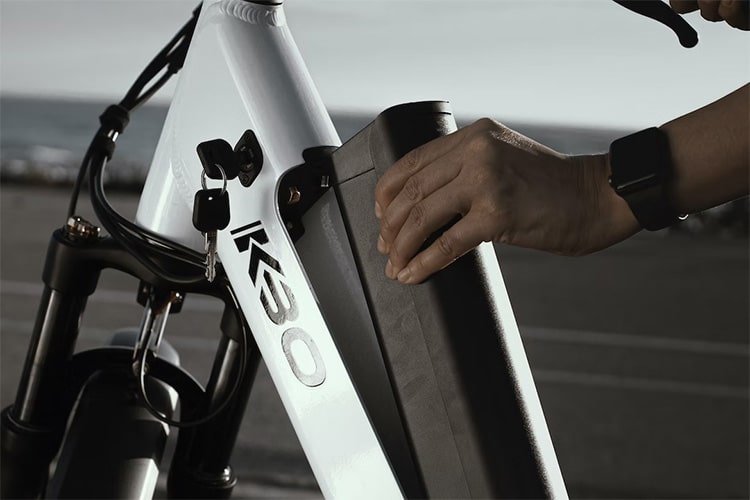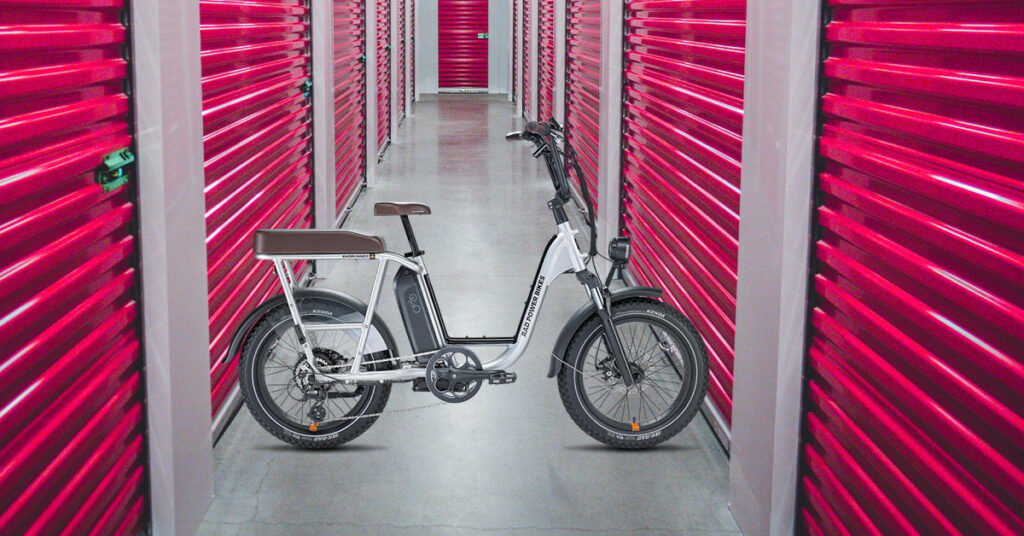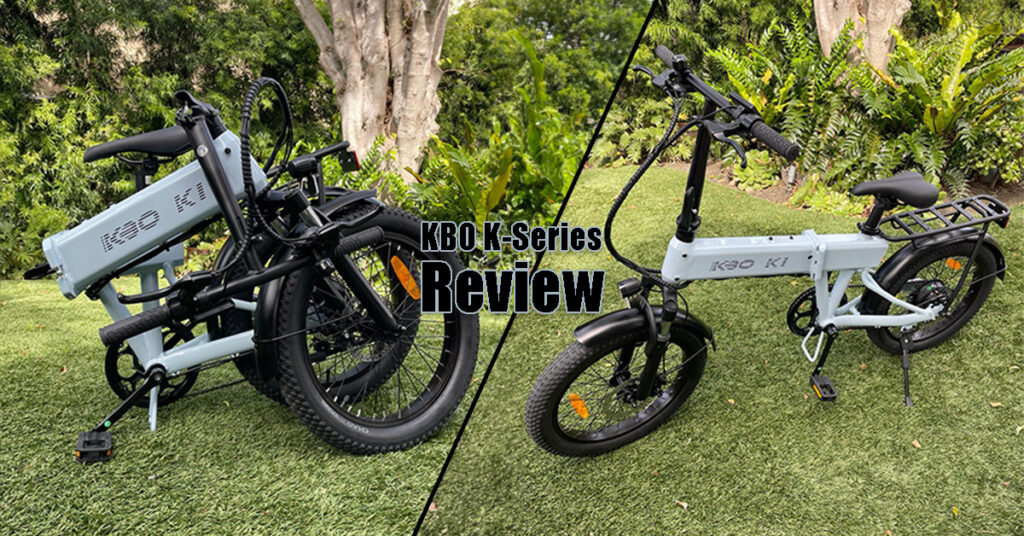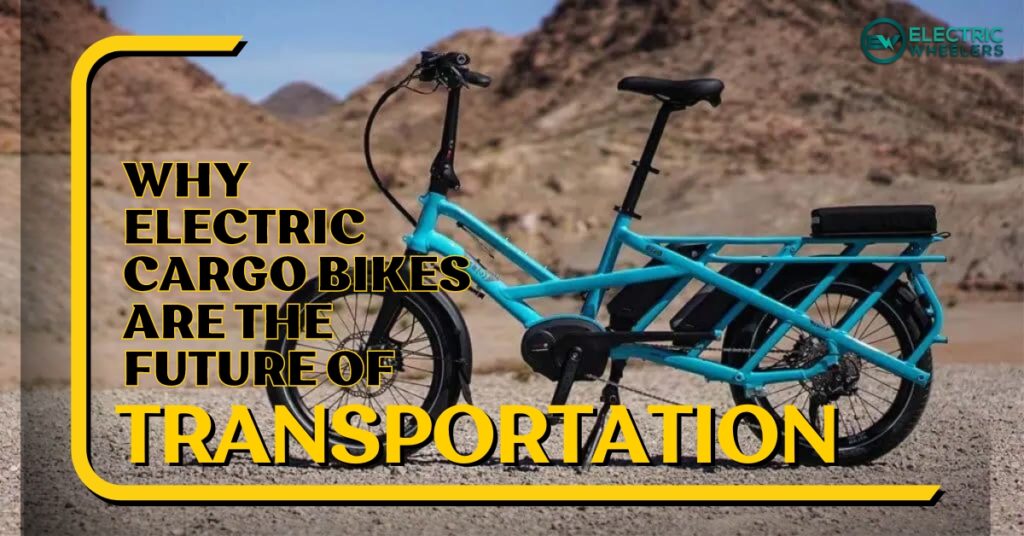You should store an e-bike correctly in winter to ensure it remains in perfect condition until spring.
Ordinarily, winter is the worst season to leave your electronics poorly kept for extended periods. Thus, keep all e-bike models in a cool and dry area despite the brand.
Correct storage practices usually prevent the frame from corrosion and the battery from getting damaged. Cold temperatures slow down the chemical reaction in Lithium-ion batteries, reducing their performance and capacity.
However, forgetting your bike for a day outside will not damage it. But ignoring it for several days might damage the battery or other essential components.
As the bike owner, you must also understand the correct battery percentage to store your e-bike with, how long the battery should last in storage, and how to maintain the battery’s health.
Luckily, this article addresses all issues about e-bike winter storage tips.
Electric Bike Pre-Storage Checklist

Even though most e-bikes can handle the worst weather, always store them safely with the correct storage procedure. Putting it away in a shed or the garage in winter does not guarantee safety.
Here is a pre-storage checklist for correct e-bike storage.
1. Clean Your e-Bike Before Storing
It is good to rigorously clean your e-bike, working from top to bottom, before storing it for the winter season.
Cleaning prevents corrosion and damage to most of the bike’s components. Carefully wipe the frame, headset, wheels, seat stays, brakes, front fork, and other tangible parts with a soft cloth.
If you have an extremely dirty water-resistant e-bike, use a medium-density brush and warm soapy water to scrub off dirt and grime gently.
For the chain, use a degreaser or any recommended chain cleaning solution to eliminate dirty and old oil from the cassette.
Moreover, clean and dry the battery contacts. But DO NOT use household lubricants to clean your e-bike because they attract dirt and grit.
Related: How to Keep E-Bike Battery Warm in the Winter?
2. Inspect the eBike
Inspecting your e-bike allows you to identify loose or damaged parts.
Carefully check the tires for punctures. Also, check the brakes, and all other components and make the necessary repairs.
It can be quite annoying to repair something you don’t plan to use for several months. But trust me, you’ll want to get a working bike out of storage in the spring.
3. Prepare the Battery for Storage
It is always necessary to charge the battery to approximately 50% before disconnecting and storing it.
In addition, you need to clean it with a soft cloth or brush to remove dust and debris and keep it in a cool and dry space away from moisture or direct sunlight.
Removing the battery before storing it prevents it from electrical draining when you are not riding the bike.
4. Lubricate Moving Parts
Always use quality chain lube on all moving parts to prevent rust. Regular lubrication keeps the bike running smoothly and ensures efficient transmission.
The chain is among the most critical moving component of the e-bike. Therefore, it needs regular quality lubrication. Other necessary parts like the front & rear derailleur and tire bearings require lubrication before storage.
For the spokes, apply rust preventive spray to protect them from corrosion.
Where to Store Your e-Bike During Winter?
During winter, it is essential to store your e-bike in a safe area free from dust, moisture, or other elements that might cause damage to the bike. Experts also recommend servicing and storing your e-bike before winter begins.
Again, the ideal spot should be free from moisture or excess temperatures. Leaving your bike outside exposes it to rain, snow, wind, and the sun.
Here are four safe areas (indoor or outdoor) to store your e-bike.
E-Bike Indoor Storage Ideas
- Storage room/basement – Before storing your e-bike in the basement, you must ensure the room is free from humidity or dampness. In low temperatures, basements become damp. However, you can use a dehumidifier or seal up all gaps to prevent rust formation on the bike.
- Inside the house – Without a basement or garage, you can still store an e-bike inside your home where you can control the room temperature. But remember that e-bike batteries are delicate and require the correct temperatures to perform well.
- Storage units – Although an expensive option, storage units guarantee the best service if you do not have enough space at home.
- Garage or shed – The garage is one of the best places at home to store your e-bike. However, you should check the humidity and temperature before packing your bike in the garage. The ideal temperatures should be between 32º and 68ºF (0-20ºC).

Can I Store Electric Bike Outside in Winter?
It’s not a good idea to store your electric bike outside during the winter.
If you want to store the e-bike outside, let’s say on your balcony, then at least remove the battery and store it inside. Then cover the bike with a waterproof bike cover.
How to Store an Electric Bike?
Now that our e-bike is properly prepared and we know what the correct storage room must look like, we can store the bike.
Here are four steps to follow:
- Remove the battery – Batteries are the most sensitive components of the bike. For bikes with removable batteries, detach them for storage in a cool and dry spot.
- Protect the frame and components – Appropriately protecting the frame and other components prevents them from scratches, corrosion, or damage. Use the recommended frame protector to cover the bike’s frame.
- Secure the bike – If you are storing your e-bike in a shed or garage, secure it with a sturdy lock to prevent theft. Lock the bike’s frame and wheels to a fixed object.
- Cover the bike – Use a sheet or a sturdy bike cover to protect your e-bike from dirt, dust, and debris. Durable bike covers also protect e-bikes from scratches or minor dents.
Related: How to Store an Electric Scooter?
How to Store Electric Bike Battery?

Storing an e-bike battery in winter (or when you are not using it) guarantees better performance.
Here are some essential tips on how to store e-bike lithium-ion batteries for better health during the winter season.
- If you want to take a lengthy break from riding the bike, the first step would be removing the battery from the bike to prevent it from losing its charge.
- Next, always charge the battery before storing it. The recommended charge is between 40% and 80%. NEVER put it away at full capacity because it affects its performance.
- Always recharge the battery routinely (up to the recommended voltage) to prevent it from going flat. This is to prevent it from becoming unrecoverable. You can periodically check the indicator to ensure it does not drop below the recommended 40% voltage.
- Batteries are sensitive and should be stored away from flammable material. So, keep the battery in a cool and dry spot away from moisture or direct sunlight to avoid extreme temperatures from degrading its performance. The optimum room temperature between 32°F and 104°F (0°C to 40°C) would be ideal for the battery’s health.
- To maintain performance, use the correct battery charger. Ensure it reaches the recommended percentage whenever the voltage decreases.
- Lastly, always keep the battery clean and free from dust or debris according to the manufacturer’s requirements.
By following the steps mentioned above, your e-bike’s battery will remain in good condition. The correct storage practices also ensure it functions optimally and extends its life.
E-Bike After Storage Checklist
How to bring out your e-bike from the storage?
Taking your e-bike to a bike shop for fine-tuning after winter storage is always imperative. But you should also perform a minor check before visiting the local bike shop.
Here is a storage checklist for what to do:
1. Inspect the E-Bike
Thoroughly check if the bike has any signs of rust, scratches, or damage. For rust, use effective home remedies or special rust compounds.
Wipe the bike with a soft cloth as you continue inspecting it.
2. Check and Reinstall the Battery
After storage, the battery will be slightly drained. Therefore, you need to charge and discharge it ensuring it is functioning effectively before reinstalling back on the bike.
3. Check the Brake Pads and Tires
Test the brakes to confirm their performance. Also, check if they are functioning correctly. Inspect the pads to replace weary or damaged ones.
After extended storage, the tires might crack or deflate. So, closely inspect the tires for cracks, cuts, or other damages. Inflate any deflated tires before riding the bike.
4. Lubricate All Moving Parts
Wipe off dirt and debris before applying lubricant on the chain, cassette, drivetrain, and other moving parts to ensure a smooth riding experience.
5. Test the Bike
Testing is the last step after examining your e-bike and addressing all the repair issues. Take a short ride to test the brakes, gears, or other components to see if they function correctly.
It would be best to address issues with the components to prevent further damage and guarantee a comfortable riding experience.
Conclusion on Storing an E-Bike
In conclusion, it is essential to understand how to correctly store your e-bike during winter until the next biking season.
Correct storage practices ensure minimum damage to the bike’s moving parts, frame, and other essential components.
No matter their resistance to water, the best and most convenient storage areas include cool & dry indoor spaces or garages. But before storing the e-bike, you must consider the recommended temperature.
This guide has looked at how to correctly put away an e-bike and everything you must know to protect your e-bike in winter.
A freelance writer and copywriter.




